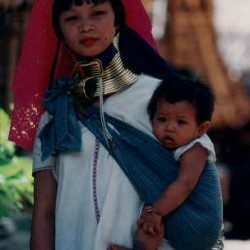Expository Text Characteristics
Spanish Classes / / November 13, 2021
Expository texts are those texts in which are presented in an objective, orderly and coherent way, certain facts, events, realities, ideas and concepts, which can present a diversity of themes: social, philosophical, human, legal, scientific studies, etc., where a topic is dealt with, seeking to make it known, explaining it or trying to expand existing knowledge of the same.
This type of text is also called informative text and differs from argumentative texts, in that its function It consists of showing or explaining a topic, without the “spirit” of convincing the reader about an idea, position or concept determined.
Characteristics of the expository texts:
Expository texts can be divided into two main types:
- The informative expository texts.- The informative texts are aimed at a broad sector where it is not necessary to have prior or very extensive knowledge of the subject exposed in the text, entering into this category journalistic texts, brochures, encyclopedias and non-specialized books, among others, where there are no technical languages or specific to the topic being discussed, allowing the general understanding of the ideas and themes presented within an understandable approach by the public in general.
- The specialized expository texts.- They are the texts that have a degree of specialization within a subject: medicine, biology, chemistry, law, mechanics, computing, scientific essays, etc. These are more focused on a public that is already initiated in the subject of which the text deals, doctors, lawyers, scientists and others, who have knowledge about the subject and know the technical language that is used in them. uses.

Structure.- They are structured in such a way that the subject matter can be shown and understood by the reader, showing the facts, events, ideas and concepts, in a way hierarchical, orderly and clear, ensuring that the ideas and messages of the same reach the reader, in a clear way avoiding any possible confusion or a bad interpretation of what has been explained, trying to the extent possible that the explanations are detailed, (the latter is more common in texts specialized). In them the use of declarative sentences and the use of the third person predominate, as is common in use frequent conjugation of verbs in the indicative mood and the use of subjective expressions is avoided in the text. Within its structure are frequently found, tools that serve as guides for better reading and understanding ideas, such as introductions, titles, subtitles, notes, and summaries, which make it easier for the reader to understand what is exposed.
They are informative. They are characterized by being illustrative in nature, they seek to clarify the exposed topics and inform, providing in many cases large amount of data, such as detailed information on the facts and events discussed, characters, investigations, etc.
They are expository. Its purpose is to transmit and make known in an objective way the information and knowledge contained in them, that is, the topics covered are present by concentrating on raising issues and formulating ideas in an orderly and coherent way, so that ideas are clear to the audience. reader.
They are explanatory. They provide an explanation (detailed in the case of specialized texts) about the data provided, for example in a text of this nature. that has the theme of medicine, specific explanations may be given about the treatment or symptoms of a particular disease, being so in different topics, giving an explanation (frequently detailed in texts of a scientific nature), on the particular topic of which it is try.
Formalism.- They are written in a formal tone, avoiding the use of colloquial language, using a precise and polite tone in the expression of ideas and in the presentation of the various data contained. Within the formalism with which they are written are a large number of technical terms typical of the type of subject matter, for example medical, scientific, philosophical, or specific terms right.
Hierarchy.- In these texts it is tried that the ideas are presented hierarchically, as well as the different subtopics that could be found in it, this is common for example in books on law, medicine, biology and the rest.
Click to know examples of expository texts.



